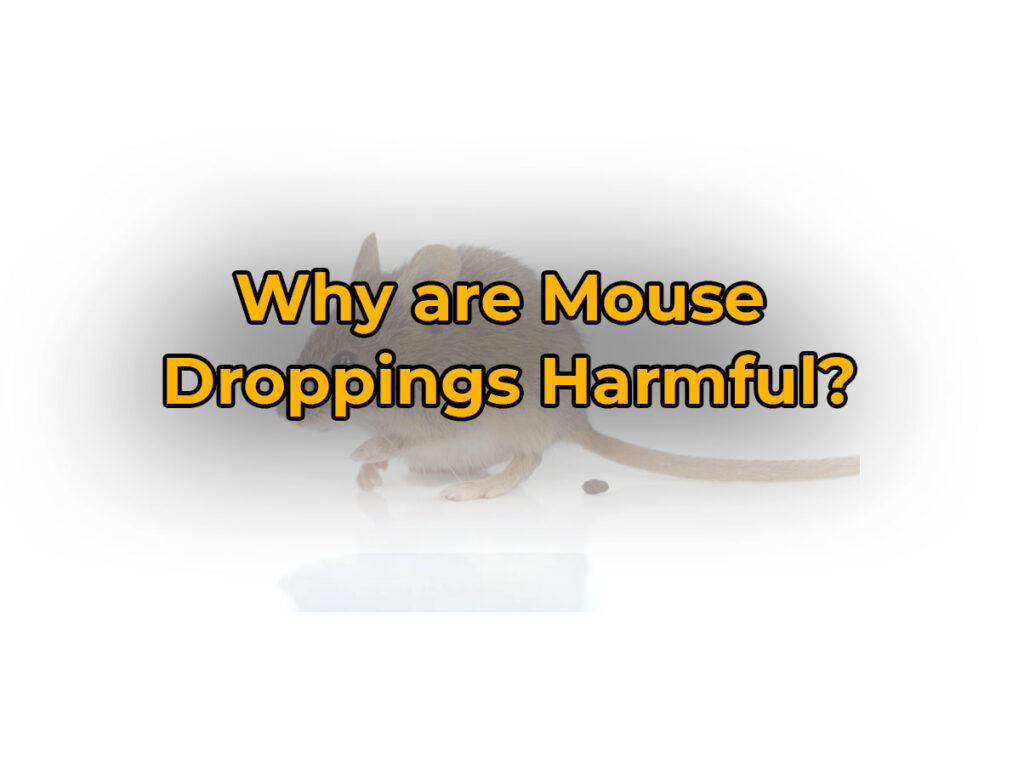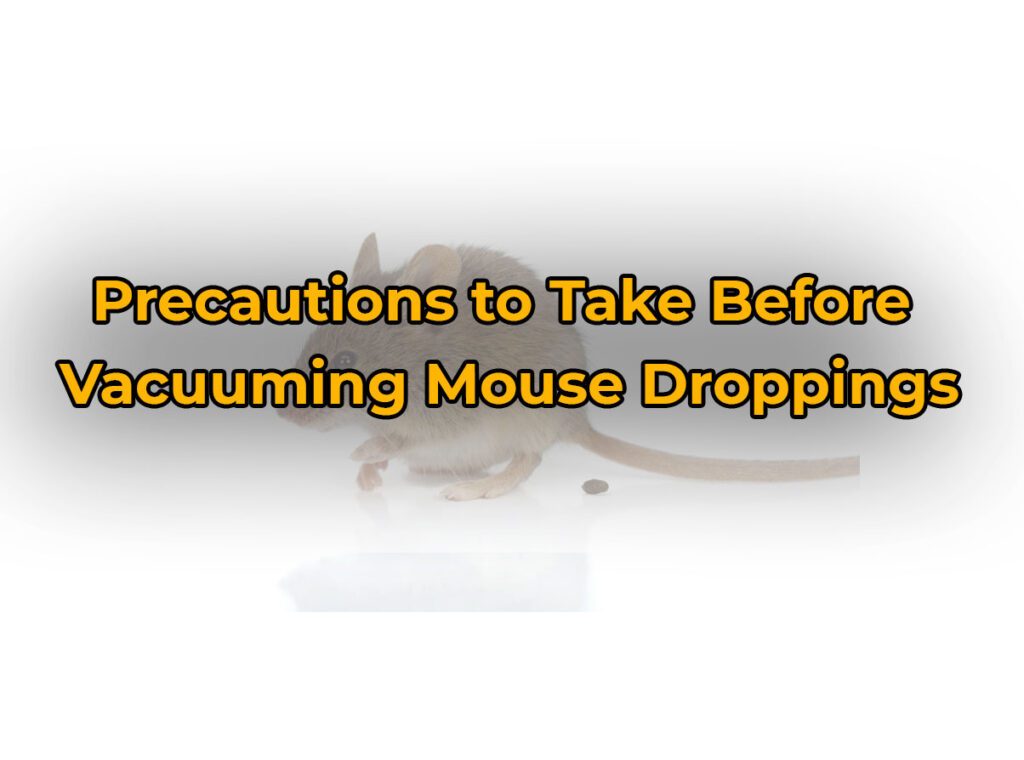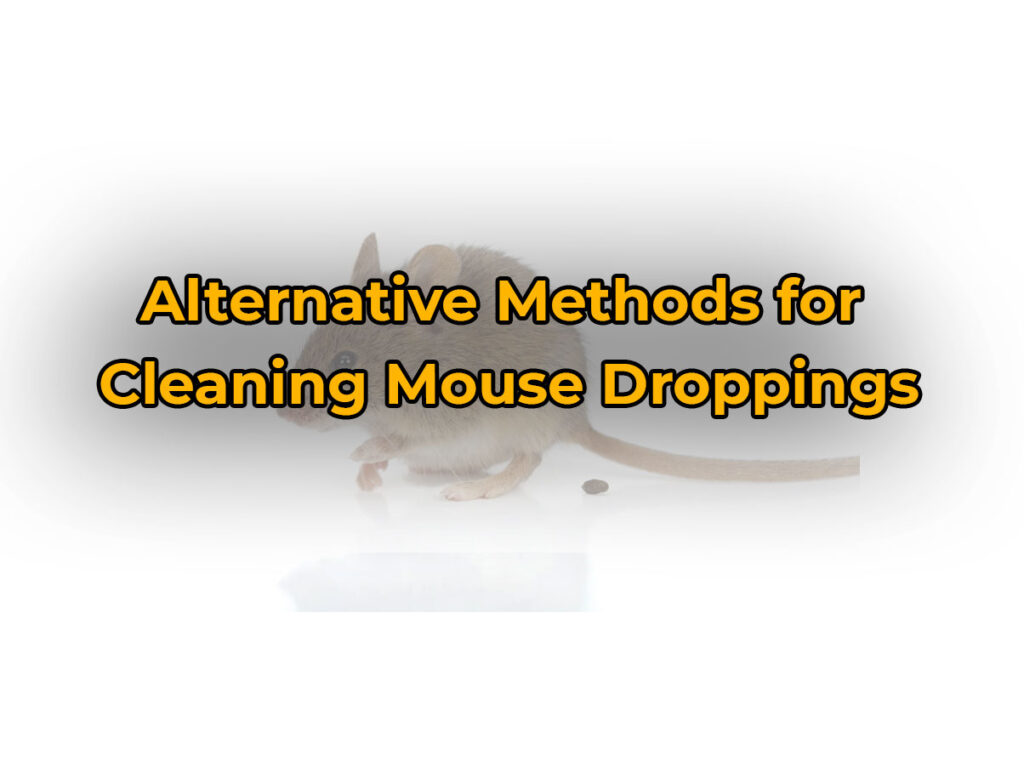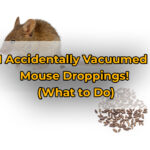I Accidentally Vacuumed Mouse Droppings: What to Do Next? Discovering mouse droppings in your home is never pleasant, but accidentally vacuuming them can be an even bigger problem.
When you vacuum up these tiny fecal pellets with a regular household vacuum cleaner, they become airborne and spread throughout the room.
This can lead to respiratory issues and other health problems, especially if anyone in your household suffers from allergies or asthma.
So what should you do if you accidentally vacuum up mouse droppings? How to troubleshoot it?
What are Mouse Droppings?
Mouse droppings are the excreta of mice. They are small and oval-shaped, about 1/8 to 1/4 inches long. Their color is usually dark, like grains of rice. You can easily identify them by their size, shape, and texture.
If you find a lot of mouse droppings, it could mean an infestation. Fresh droppings indicate that the mice are still around. Inspect the area to see how they get in.
Mice can spread germs through their feces, urine, saliva, and parasites. It’s important to take precautions when cleaning up mouse droppings. Wear facemasks and gloves. Disinfect the area.
Mouse droppings are full of germs that can make you sick. Exercise caution!
Why are Mouse Droppings Harmful?

Mouse droppings may carry diseases and cause allergic reactions. These small, black pellets can contain bacteria like salmonella or hantavirus. Ingesting or inhaling them can cause health problems.
Mice often live in places like attics, basements, and garages. Cleaning up without proper protection and sanitization can spread bacteria. It’s important to identify the type of droppings, as rat droppings can carry leptospirosis. Professional pest control should be contacted if an infestation is suspected.
The Centers for Disease Control and Prevention reported over 700 cases of hantavirus pulmonary syndrome in the US between 1993 and 2017, with a mortality rate of 38%. This shows the danger of improper handling and cleaning of mouse droppings. Vacuuming them is like a high-stakes game of ‘Operation’, only with a vacuum instead of a game board!
I Accidentally Vacuumed Mouse Droppings! (The Risks)
Vacuuming mouse droppings may seem like an easy fix, but it comes with great risks. The dust contains bacteria and viruses that can be hazardous to your health when airborne. Beware of the dangers of vacuuming mouse droppings and take preventative measures.
Mouse droppings can cause Hantavirus, which can be fatal. Vacuuming these droppings can create tiny particles in the air of your home, leading to breathing difficulties, fever, vomiting, and body aches.
It’s better to use gloves, damp towels, and an EPA-approved disinfectant instead of a vacuum cleaner. Wet droppings before wiping or spraying them with water-disinfectant mixture to avoid dust flying in the air. Remember to not breathe in any dust that rises.
In 2012, three people contracted Hantavirus from sweeping up mouse feces without proper protection. Therefore, vacating an infested area before clean-up is essential since disturbances made by humans can spread the virus.
Precautions to Take Before Vacuuming Mouse Droppings

It’s vital to take precautions before vacuuming mouse droppings, as rodents can be carriers of dangerous diseases. Wear gloves and a mask to avoid direct contact and inhaling particles.
Open windows for ventilation or use a fan. Spray the droppings with disinfectant or bleach solution. Clean your vacuum afterwards and discard the bag or wash the canister with hot, soapy water. If you experience flu-like symptoms within a few weeks of cleaning up mouse droppings, seek medical attention.
Vacuuming is an effective way to clean droppings, yet it’s not recommended for large infestations or heavily contaminated areas. To keep rodents away, seal cracks and holes, reduce clutter and food sources, and use traps or poison.
Steps to Follow When Vacuuming Mouse Droppings
Vacuuming mouse droppings can be daunting. Potential health risks associated with handling such waste make it important to follow specific steps:
- Wear protective gear, like gloves and a mask.
- Use a HEPA filter vacuum to trap particles or bacteria.
- Gently pick up large droppings with a paper towel or cloth.
- Vacuum remaining debris.
- Seal all waste in an airtight bag and dispose of it properly.
Avoid sweeping or stirring up dust: this could cause bacteria and pathogens to become airborne. Don’t attempt cleanup without proper protective gear. Ventilate affected areas before cleaning. Shower after work. Disinfect utensils used for cleaning with bleach solution. Finally, wash hands with running water.
If you thought vacuuming up mouse droppings was a dirty job, just wait until you have to disinfect the vacuum afterwards.
Disinfecting the Vacuum After Vacuuming Mouse Droppings
Vacuuming mouse droppings can spread harmful viruses and bacteria. So, it’s crucial to disinfect the vacuum after cleaning. Here’s a step-by-step guide:
- Dispose of the filter and bag/canister properly.
- Clean the interior with a disinfectant, using a cloth or brush.
- Wipe down the exterior with a disinfectant solution.
- Let components dry before reassembling.
Plus, you must wear gloves while handling contaminated material. This can protect you from disease-causing germs.
Regular cleaning and maintenance of your vacuum can help prevent future infestations. It also keeps allergens, bacteria, and mold spores away.
Don’t wait for pest infestation – disinfect your vacuum today! Keep your home and family safe. Who needs a vacuum when you have a cat?
Alternative Methods for Cleaning Mouse Droppings

To clean mouse droppings safely, use alternative methods instead of vacuuming. For this section, “Alternative Methods for Cleaning Mouse Droppings,” we will explore three effective sub-sections. These include using disposable gloves and paper towels, using a damp cloth, and using a HEPA vacuum.
1. Using Disposable Gloves and Paper Towels
Daunting or not, mouse droppings must be handled with care. Don those disposable gloves and take paper towels to pick them up. Seal the paper towels in a plastic bag, then disinfect the area with a suitable cleaning solution.
Take extra precaution when dealing with mouse droppings – bacteria like salmonella and hantavirus may be present. Wear protective equipment – gloves, mask and goggles – to prevent airborne pathogens from entering your body system.
The Centers for Disease Control and Prevention (CDC) states that mice are generally found within 30 feet of their nests. Check potential hiding spots or nests in addition to where you have found droppings.
2. Using a Damp Cloth
Clean mouse droppings safely with a damp cloth! Here’s a 6-step guide:
- Put on latex gloves and use paper towels to pick up any droppings or debris.
- Soak your cloth in warm water and mild soap.
- Squeeze out excess water from the cloth.
- Wipe down the area where you found droppings or stains.
- Rinse the cloth with warm water and soap periodically.
- Sanitize with an EPA-approved disinfectant.
It’s important to remember: only water won’t kill germs and bacteria. So, use an approved disinfectant after cleaning.
Also, throw away contaminated materials like gloves and paper towels in a plastic bag.
Follow these steps and you can avoid the risks of infectious diseases from rodent infestations!
3. Using a HEPA Vacuum
Using a HEPA vacuum is a great way to clean mouse droppings that can be hazardous to your health. Here are three things to consider when using one:
- Make sure the vacuum has a HEPA filter. This will capture viruses and bacteria.
- Dampen the area around the droppings before vacuuming. This lowers the risk of releasing dust into the air.
- Keep the vacuum at least an inch away from the surface being cleaned. This helps pick up all the droppings and residue.
No one enjoys cleaning up after rodents. But, using a HEPA vacuum reduces contact time with potentially harmful matter. Soon, those pesky critters will be gone and you’ll have peace of mind – your health and sanity will thank you! So, give your home some TLC – don’t invite rodents, unless you’re starting a circus! Check also: Best Cord Free Handheld Vacuum
Preventing Mouse Infestations
To prevent future mouse infestations in your house after accidentally vacuuming mouse droppings, you can follow some simple solutions.
1. Keeping the House Clean
Mice like mess, so it’s key to keep your home tidy. Make sure to clean high-risk places, like the kitchen and pantry, daily. Also, declutter living spaces to reduce hiding spots. Vacuum often in hard-to-reach places. Put out trash and seal food containers tightly. Don’t leave pet food out overnight!
Natural cleaning products are best, so avoid chemicals that could be toxic. Keep your home clean to prevent mice – it’s essential for your family’s health and safety. Seal up all entrances to stop mice from entering.
2. Sealing Possible Entry Points
Keeping mice away is an essential part of protecting your home. This article provides tips on how to seal potential entry points.
- Locate possible entrances – Check for crevices, holes and gaps that mice can use to get in.
- Fill cracks – Use foam sealant or silicone caulking to block these gaps.
- Cover drains and vents – Use wire mesh with small openings to cover these areas.
- Fit door sweeps – Attach brush-like pieces to the bottom of the door to stop mice from entering.
- Add weather stripping – Put adhesive strips or thresholds around doors and windows to keep mice out.
Also, make sure the smelly garbage disposal or cans have tight-fitting lids, store food properly and keep surfaces clean.
Sealing entry points not only keeps pests out but also helps you save energy in colder months.
Since 500BC, Egyptians have used cats to protect their grain from mice. People have used both live predators and modern solutions such as mouse traps to control rodents.
Using mouse traps is like online dating – set the bait, wait for the catch and hope they don’t run away! Check also: How to Fix a Vacuum Cleaner with No Suction.
3. Using Mouse Traps
When it comes to preventing mouse infestations, mouse traps can be the answer! Here are some tips on using them:
- Choose Wisely: Different types of traps are available, like snap traps, glue traps, and live-catch traps. Pick one that you prefer.
- Bait Placement: Put bait at the end of the trap and in areas where mice usually go.
- Set it Up: Read the instructions and set the trap with the right amount of pressure.
Be patient and consistent when checking traps. Don’t overcrowd areas with too many traps, or mice will avoid them. Clean and discard dead rodents regularly.
Remember, the only good mouse is a dead mouse (or a pet mouse, if that’s your thing)!
Conclusion
Cleaning mouse droppings is not easy. Vacuuming them is even worse! Safety precautions must be taken when handling rodent poop. Wear gloves and a mask, wet the area with disinfectant, wait 5-10 minutes, then wipe clean. Inhaling dust from dried droppings increases the hantavirus risk. This can lead to severe respiratory failure.
Never sweep or vacuum the droppings. Professional cleaners have been trained on how to handle dangerous cleaning tasks safely and EA supplies cleaning solutions.
Is it dangerous to inhale mouse droppings while vacuuming?
Yes, it can be dangerous to inhale mouse droppings while vacuuming as they can carry harmful bacteria and viruses. It is recommended to wear a protective mask and gloves while cleaning up droppings.
Can vacuuming mouse droppings spread diseases?
Yes, vacuuming can spread diseases if the droppings are not handled properly. It is recommended to disinfect the area after cleaning up and dispose of the vacuum bag in a sealed plastic bag.
What are some common symptoms of diseases spread by mouse droppings?
Some common symptoms of diseases spread by mouse droppings include fever, body aches, chills, fatigue, and respiratory symptoms like coughing and difficulty breathing.
“There is no real ending. It’s just the place where you stop the story.”






